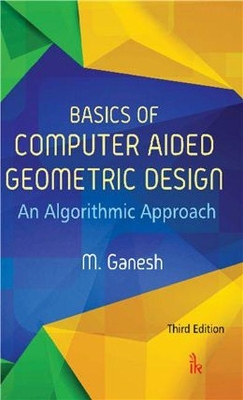
Sine the publication of the second edition of this book, a lot of crucial information in the area of computer aided design has surfaced along with the recent researches the world over. Hence, the need to revise the edition. This new edition has been duly updated and thoroughly overhauled. The main aim of the book is to provide a good foundation of computer aided geometric design (CAGD) to the students of undergraduate (according to the US standard) courses in engineering, especially, mechanical engineering, computer science, geometric modeling and CAD / CAM. It will also be useful for practising engineers and professionals working in the aeronautical and space research and in the shipbuilding; car manufacturing and other areas requiring designing and fabrication of hulls, chassis and other engineering parts on a large scale; telephone set and mobile handset designing; washing machine and TV set designing; designer glassware industry; sports shoe upper designers; and so on. Reflecting the advances that have taken place in the study and applications of CAGD, this book treats not only the theory aspects but also deals with a broad variety of topics relating to the applications. CAGD is becoming a fast growing area, used in all kinds of manufacturing processes involving designing of geometric shapes (such as car chassis, telephones, satellites, missiles, trains, etc) and in computer graphics. CAGD cannot be learnt without a sound knowledge of differential geometry. So, the book starts with the study of differential geometry. Concepts introduced are always illustrated with worked out examples. A list of problems is also given at the end of each chapter so that the students can apply their knowledge in solving them and thereby learn more. Highlights of this edition Two new chapters 9 and 10 (Case Studies and Steps to Develop a Profile, Curve and Surface) have been added. Chapter 9 deals with applications of the methods developed in this book to a ‘toy model’. Chapter 10 provides important tips for tackling problems, arising out of real-life situations. Chapters 3 to 5 have been thoroughly revised for enhancing clarity of presentation and understanding. In chapters 3 to 6, the following additions have been incorporated: Plenty of new examples. More explanations and computational details. Algorithm(s) for each important computation. Pseudocode for each algorithm has been developed in order to facilitate the students in developing the codes in the language of their choice. All pseudocodes of a chapter have been collected and presented at the end of that chapter as an appendix in order to not interfere with the flow of presentation.
| ISBN: | 9789384588410 |
| Publication date: | 30th March 2019 |
| Author: | M. Ganesh |
| Publisher: | I K International Publishing House Pvt. Ltd |
| Format: | Paperback |
| Pagination: | 298 pages |
| Genres: |
Computer-aided design (CAD) Differential and Riemannian geometry |